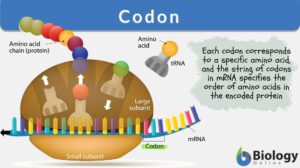Search Results for: axis
Sagittal axis
Definition noun (anatomy) (1) An anatomical axis or imaginary line that lies perpendicular to the sagittal plane. (2) The... Read More
Nervous System
THE is the most complicated and highly organized of the various systems which make up the human body. It is the... Read More
Pelvic axis
pelvic axis A hypothetical curved line joining the centre point of each of the four planes of the pelvis, marking the centre... Read More
Frontal axis
Definition noun (anatomy) (1) An anatomical axis or imaginary line that lies perpendicular to the frontal plane. (2) The... Read More
Diarthrodial joint
What is a diarthrodial joint? A diarthrosis joint is a freely moving joint characterized by its mobility and joint cavity... Read More
Longitudinal section
Longitudinal Section Definition To describe the direction of movements and location of different body structures, a... Read More
Sagittal plane
The sagittal plane is the plane that allows us to see the world in bilateral symmetry. Whether reaching for a high shelf,... Read More
Radial symmetry
Definition noun A form of symmetry in which the body plan is divisible into identical parts around a central... Read More
Photosynthesis
Photosynthesis is a physio-chemical process carried out by photo-auto-lithotrophs by converting light energy into chemical... Read More
Revolution
revolution 1. The act of revolving, or turning round on an axis or a center; the motion of a body round a fixed point or... Read More
Intercalary meristem
The basic structural framework of plants is composed of different types of tissues. Based upon the capacity to divide, the... Read More
Bilateral symmetry
Definition noun, plural: bilateral symmetries A form of symmetry in which the opposite sides along a midline is a duplicate... Read More
Angiosperm
Angiosperms Definition What is an angiosperm? An angiosperm is a plant that produces flowers. The angiosperms, also... Read More
First-order kinetics
What is a First-Order Kinetics (First-Order Reaction)? First-order kinetics refers to a reaction wherein the overall rate... Read More
Embryology
Embryology Definition Embryology is a branch of biology that deals with the topics concerning gamete formation... Read More
Eadie-hofstee plot
Eadie-hofstee plot (Science: biochemistry) a graphical representation of enzyme kinetic data in which the velocity of the... Read More
Mutualistic symbiosis
Mutualistic Symbiosis Definition In order to understand what a mutualistic symbiotic relationship means, we will break down... Read More
Binary fission
Binary Fission Definition What is binary fission? In biology, binary fission is a type of asexual reproduction where a... Read More
H and d curve
Definition noun A graph in which the density of the photographic film (vertical axis) is plotted against the logarithm of... Read More
Pleiotropy
Pleiotropy Definition When one single gene starts affecting multiple traits of living organisms, this phenomenon is known... Read More
Morphology
Morphology Definition Morphology means the study of the shape and structure of living things from a biological perspective.... Read More
Hormone Production
Reviewed by: Mary Anne Clark, Ph.D.Hormones are chemical messengers produced by glands in the endocrine system.... Read More
Peristalsis
What is Peristalsis? Peristalsis is the series of involuntary, wave-like muscle movements in the cylindrical, hollow tube... Read More





















